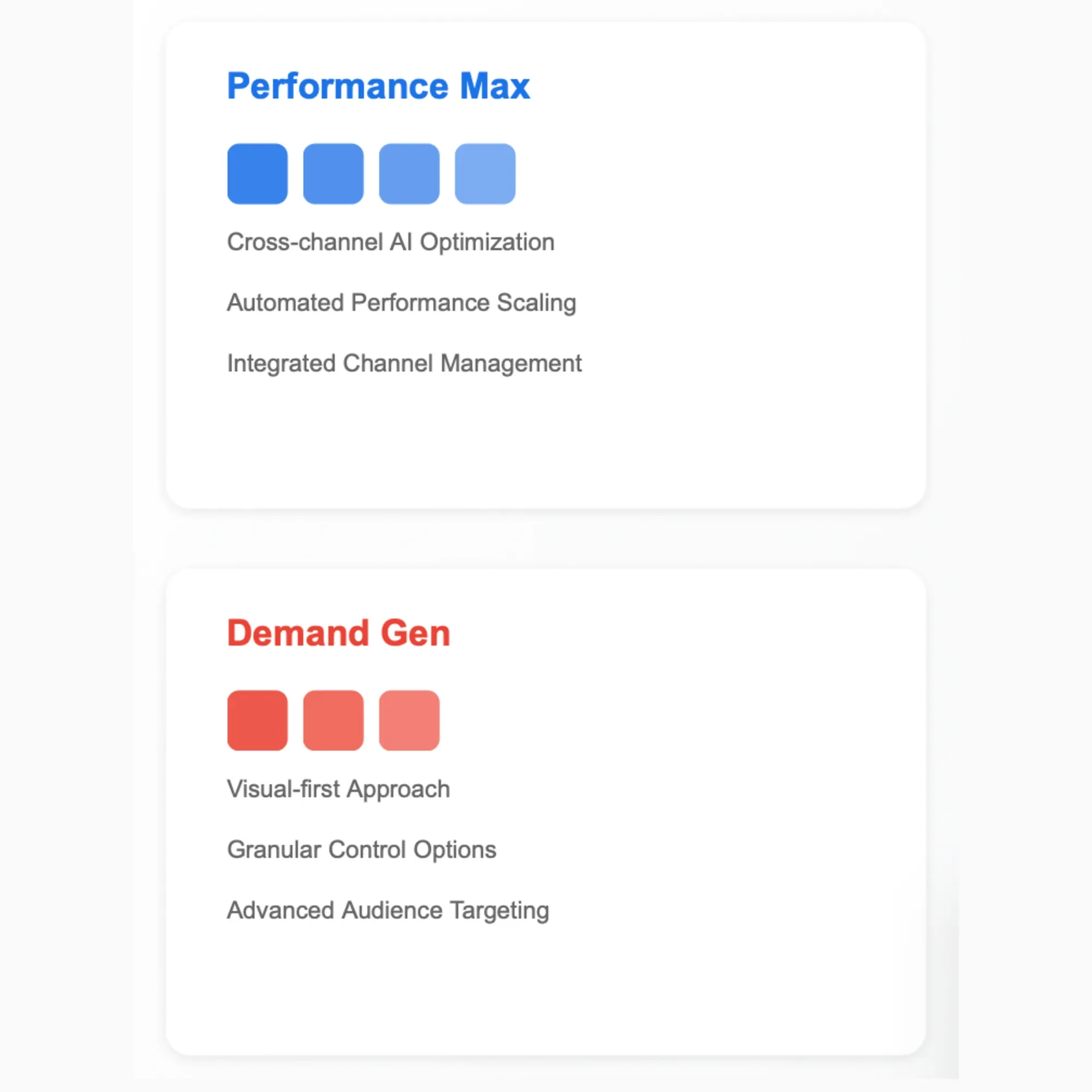Google clarifies distinct roles of Performance Max and Demand Gen ad campaigns
Analysis of Google's strategic approach to AI-powered advertising campaigns and their specialized use cases for marketers.

Google yesterday has provided detailed guidance on when marketers should utilize Performance Max versus Demand Gen campaigns, marking a significant clarification in its advertising product strategy.
According to Google's latest documentation, Performance Max campaigns leverage artificial intelligence to maximize conversion value across all Google channels, while Demand Gen campaigns focus specifically on visual-first surfaces where consumers aren't actively searching for products or services.
The technical specifications reveal that Performance Max operates across Google's entire advertising ecosystem, including Search, YouTube, Display, Discover, Gmail, and Maps. In contrast, Demand Gen campaigns concentrate on YouTube, Discover, Gmail, and the Google Display Network, with the latter becoming available in March 2025.
A notable technical distinction lies in the campaigns' optimization capabilities. Performance Max employs end-to-end AI optimization for bidding, audience targeting, and creative assets. Meanwhile, Demand Gen provides marketers with granular control over channel placement, creative tailoring, and audience targeting through lookalike segments.
Statistical evidence supports the effectiveness of these approaches. According to Google internal data from November 2022, advertisers using Performance Max with video assets saw an average 12% increase in conversions. The platform automatically adapts video content across different aspect ratios, with companies incorporating vertical, horizontal, and square formats achieving 20% more conversions on YouTube compared to using horizontal videos alone.
For audience targeting, Performance Max utilizes first-party data through Customer Match lists to identify potential customers, resulting in an average 5.3% conversion uplift. The system also supports multiple conversion goals within a single campaign, allowing marketers to optimize for both online sales and in-store visits simultaneously.
Marketing executives have reported positive results from implementing these campaigns. Antonio Giordano, Senior Director of Performance Marketing at Versace, stated: "As a luxury brand, we thought Performance Max wasn't for us. However, we've been able to properly test it, control our brand image, reach additional customers, and increase overall business performance."
The documentation emphasizes that these campaign types can operate independently or in tandem, depending on specific marketing objectives. Performance Max excels in driving direct response and return on ad spend across all channels, while Demand Gen provides enhanced control over ad placements and creative elements.
Looking ahead, Google has announced upcoming features for March 2025, including channel controls for Demand Gen campaigns and expanded placement reporting for Performance Max, which will incorporate Search Partner sites.
The clear delineation between these campaign types represents Google's strategic response to evolving advertiser needs, balancing automated optimization with manual control options across its advertising platforms.
For technical implementation, Google recommends consolidating Performance Max campaigns where possible to provide AI systems with more comprehensive data for optimization. However, separate campaigns should be maintained when different budgets, cost-per-acquisition targets, or regional requirements exist.
This comprehensive guidance from Google provides marketers with a technical framework for determining their campaign strategy, while maintaining flexibility for diverse business objectives and market conditions.

